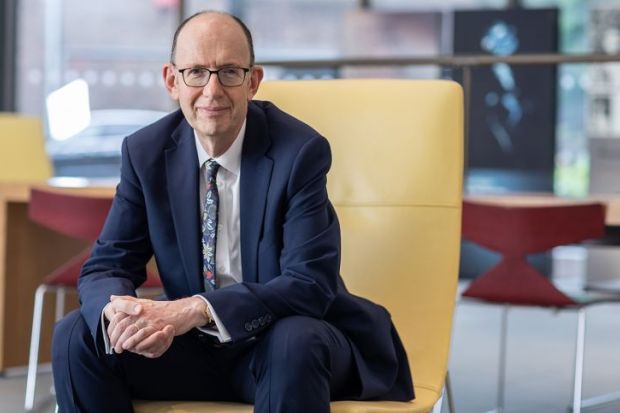London suffers from an “overcrowded and fragmented” higher education scene with “strategic consolidations” likely in the coming years, according to a university leader who has just completed a rare sector merger and is now eyeing further expansion.
City, University of London officially joined forces with St George’s, University of London this month in what Sir Anthony Finkelstein, the president of the new institution, described as an “enormously complicated” undertaking.
Despite the challenges, Sir Anthony, who has led City since 2021, said he was actively seeking more opportunities to partner or merge with other institutions, arguing that scale is what is needed in the current climate.
“I think the London higher education scene – perhaps also more generally – is too crowded and fragmented,” he said. “There is good reason, in all sorts of regards, for strategic consolidation. If there is going to be a shake-up, I’m going to be a shaker.”
The merger with St George’s, a specialist medical institution, has expanded City’s student population to around 27,000, Sir Anthony said.
“Something around 35,000 seems to be viable and would allow us a margin for innovation that would make a difference. You need scale to drive digital and delivery improvements, so bring it on. If there are opportunities, I’m very up for seeing what they might be.”
The computer scientist stressed that the merger, the first major coming together of providers since the Institute of Education moved into UCL in 2014, had nothing to do with the sector’s current financial difficulties but was a chance to bolster City’s healthcare offering and carve out a distinctive position as an institution that focuses on practice and profession.
“A merger of the kind that we have undertaken would be a very poor strategy to address an underlying financial sustainability charge,” Sir Anthony said.
“If you had a situation where there was another institution whose offerings were very similar and basically you could fold out a competitor, get rid of their cost base and amalgamate what they were doing into what you are doing, possibly that might be a reasonable mid-term financial strategy – but that is not what I’m doing.”
If the new government did want to foster an environment that facilitated more mergers – understood to be part of Labour’s strategy for managing the ailing finances of the sector – Sir Anthony said providing capital was key.
“If I had a choice, I would much rather have access to capital that is low risk and doesn’t put whacking great covenants on my balance sheet…just providing that would allow a lot braver innovation in the sector,” he said.
While the formal deal has now taken place, Sir Anthony said it would still take a year for “substantial operational integration” to happen between the two universities, with some pre-merger courses still running for another five years. A full rebrand under the new City St George’s title is planned for early next year.
While not anticipating redundancies due to the merger, Sir Anthony said there would inevitably be changes to the workforce and a “tightening up of the operating model” as teams are combined, admitting this was causing some “uncertainty” for staff.
But he said the move had actually left many employees feeling more secure, particularly at St George’s, an institution that had long been the subject of speculation about its future.
“Broadly, we’ve had an entirely positive reaction [from staff], with the usual mixture of nobody likes change and a little bit of mourning of things that are passed. There is always an element of that, and it is right that should be the case.”




